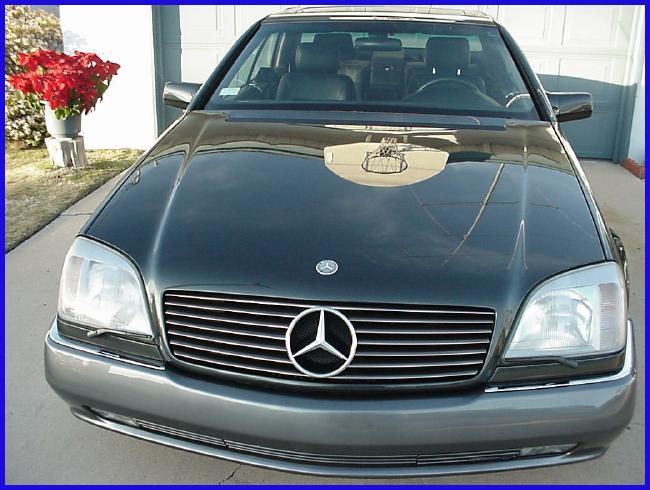
|
K6JRF's Page formerly W6FZC My Mercedes Benz S500 Coupe |

|
Analyze and Troubleshoot "Check Engine" MIL and Electronic Control Units (ECU)!
|
Engine Detailing with a Common Product!
Description
 This picture shows the overall engine after the use of . . . No Touch® Tire Care!
This picture shows the overall engine after the use of . . . No Touch® Tire Care! Yes, that's right. The common product that we all have used at one time or another to shine up the rubber. And it works
quite well. I don't like the fact that it takes some time to dry but that drawback aside, it does do a great job on my
tires.
Yes, that's right. The common product that we all have used at one time or another to shine up the rubber. And it works
quite well. I don't like the fact that it takes some time to dry but that drawback aside, it does do a great job on my
tires. But while visiting Pat at his shop, I noticed that he had a few cans of No Touch® hanging around. He next showed what he does with them! To me it was something that I would have never thought about: use it on the engine. He proceeded to 'shine' up a customer's car with it. |
|
 Well, needless to say, that I couldn't wait to get home and try this myself. Actually, I was a little hesitant at first even
though I saw it done on another Mercedes.
Well, needless to say, that I couldn't wait to get home and try this myself. Actually, I was a little hesitant at first even
though I saw it done on another Mercedes. So first, I cleaned the engine a bit. My engine has no leaks so there's not a lot of oil film in the compartment, so just blowing and wiping it down was all that was needed. So I just applied it as recommended: coat the parts to be shined with a good bead of foam. It will start to soak in immediately so make sure the surface is adequately covered. Then simply let it dry. Overnight is best. Then wipe the high spots down with a shop cloth and buff it out. |
|
 I did all parts shown in the pictures including the air plenum, F23 module box, fuse box and facade covers. Even did the Aux
fans and grill work as shown.
I did all parts shown in the pictures including the air plenum, F23 module box, fuse box and facade covers. Even did the Aux
fans and grill work as shown.The rubber parts shine brightly as do the plastic parts such as the air intake tubes. The air cleaner comes out as a satin finish but all parts have a 'deep' luster. No Touch® is the only patented product that combines a cleaner (surfactant), dressing (silicone; read warning above) and a drying agent (bonding agent) all in one. It leaves a satin finish and is the only one-step tire care that cleans, shines and protects tires. Well, now it has a new use in my garage! Don't confuse this with the use of WD40. Sure it may go on quicker but after a few days, it evaporates and so does the shine. Also it's greasy, it attracts and holds dust. If you do use this type of product, you should let it dry thoroughly (about 8 - 12 hours) before driving. Then wipe it down to remove all 'loose' residue. I wouldn't advise spraying into the air inlets on the front of the car . . . nor the rubber moldings that surround the air inlets. But . . . you can't say you weren't warned about contamination, so be careful . . . |
|
Send me |